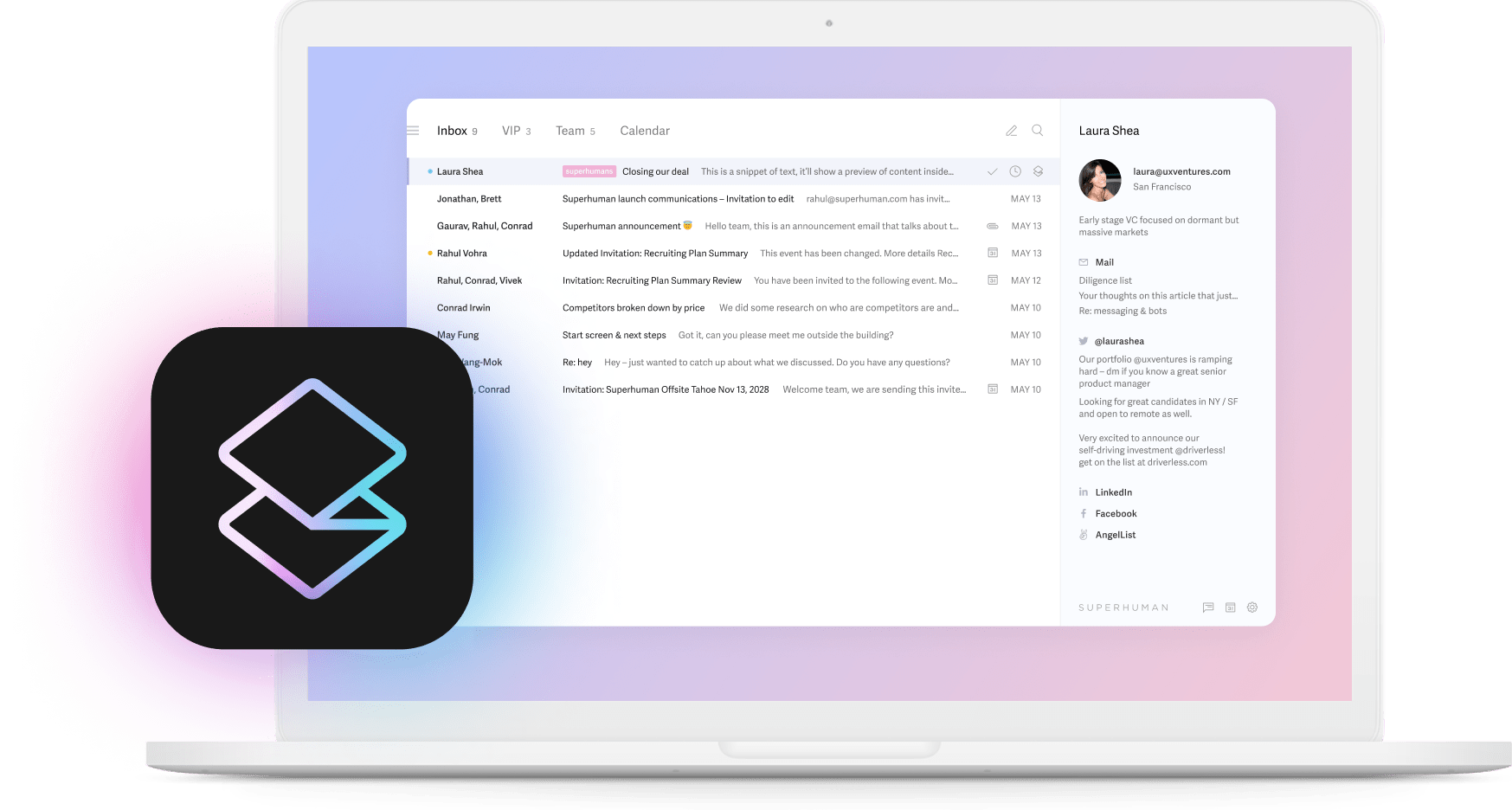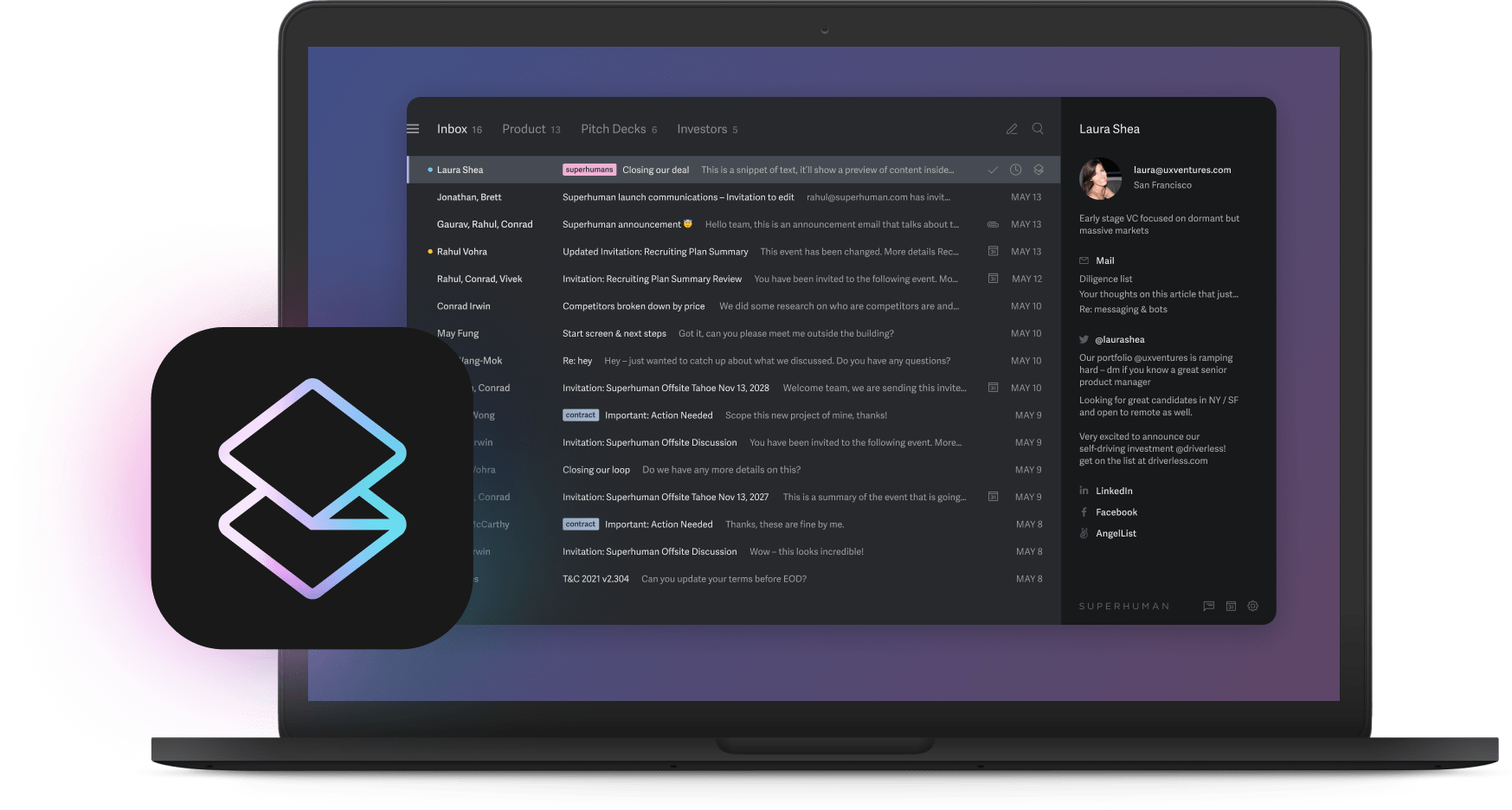
You open your laptop on Monday morning, and there are 47 new emails waiting. By the time you've read through them all, 12 more have arrived. It's become a never-ending spinning wheel. Your inbox was supposed to make work faster, but instead it's become a black hole that swallows entire mornings.
The average office worker gets more than 120 emails every day and spends nearly 30% of the workday just dealing with messages. Think about that. Nearly a third of your working hours are spent sorting, reading, and writing emails. All that time steals your focus, delays decisions, and creates this nagging worry that you're missing something important.
You can solve these problems by using AI to manage your emails. When they learn your habits, they don't just help you go faster. They separate junk from important messages, write replies that sound like you, and turn long email chains into quick summaries.
This guide shows you how to go from inbox chaos to calm control, so you can fly through email and make it feel good again.
Figure out how bad things are right now
Before you fix anything, you need to see what you're dealing with. Most people have no idea how much time email consumes until they measure it. It's like trying to lose weight without stepping on a scale.
Track these numbers for a few days:
- How many emails are sitting in your inbox, both unread and total
- How many new emails do you get each day? Count them for a typical day
- How much time do you spend on email? Track the hours you spend reading and writing
- How long before you reply? Check how long people usually wait for your response
- How often do important emails get lost? Think about the times something slipped through
Once you see these numbers clearly, you'll know which AI features to try first. For example, if you have a lot of email backlogs, you might want to use Superhuman’s Auto Archive to clean up clutter, or if you struggle to differentiate between promotional and important emails, the Auto Labels feature can help highlight what matters.
Set up smart sorting using AI
Up to 50% of emails are completely useless for small businesses. That means half the messages in your inbox right now could disappear tomorrow, and you wouldn't miss them.
This is where smart sorting comes in. It puts emails into buckets automatically, keeping the important ones where you can see them. Start by picking categories that match how you work. You might sort into VIP/Everything-Else or Important/Updates/Promotions.
Superhuman's Custom Split Inbox feature does this perfectly by grouping emails into whatever categories matter most to you.
Next, set up basic rules based on who sent the email, what domain it came from, or certain keywords. Train the AI by fixing its mistakes and giving it feedback, then check weekly to catch emails it sorted wrong, and keep tweaking the system.
Set up auto replies using AI to reply in seconds
In emails, you have to write a response to every single message. Even a simple "thanks, got it" takes 30 seconds to type. Multiply that by 50 emails, and you've just spent 25 minutes saying "thanks."
This is where AI tools really shine. They look at what you're replying to and write back in a way that sounds like you. Think of it like having a very smart assistant who's been reading your emails for months and knows exactly how you talk.
Superhuman Write with AI feature turns short phrases into full emails that match your writing style. This tool reads messages you've sent to specific people before and copies your tone and voice. It gets better over time as you write more emails. Here's how to set it up:
- Pick your tone. Tell the AI if you want to sound formal, friendly, or brief so it matches how you want to come across.
- Make templates. Create standard replies for questions you get all the time. Keep a consistent email format across templates to look professional and stay on brand.
- Teach the AI. Read what it suggests and edit it to show the AI your style.
- Check before sending. AI is smart, but you still need to review. Look for generic language or mistakes to make sure each reply fits the person and situation.
Set up auto-scheduling and follow-ups
You know that feeling when you're trying to schedule a meeting with five people? The endless back-and-forth emails. "How about Tuesday at 2?" "I can't do Tuesday, what about Wednesday?" "Wednesday doesn't work for me, but Thursday is free."
By the time you find a slot that works, you've exchanged 15 emails and a week has passed.
AI tools like Superhuman's Create Event turn this nightmare into something that just happens automatically. Connect your calendar and tell it when you're available. AI will suggest the best meeting times so you don't have to play email ping-pong.
You can also create different follow-up schedules for different types of emails using the Smart Send feature. With this turned on, your message waits until the right time to send, so you can write emails at 11 PM but have them arrive at 9 AM the next day. Set up rules for different time zones so you don't accidentally schedule a 3 AM call with someone in Tokyo.
Set up an auto-summarizer for long email conversations
We've all been there. You get copied on an email thread that's been going back and forth for two weeks. There are 23 messages in the chain. The subject line has been changed three times and now says "RE: RE: FW: Quick question about the thing we discussed (URGENT)."
You need to understand what's happening, but reading through everything would take 20 minutes you don't have. AI summarization changes this completely. This cuts your email reading time, makes your inbox feel much lighter, and turns complicated workflows into simple tasks.
AI summarization works two ways. It either picks out key phrases and sentences or writes new summaries in its own words. The Auto Summarize feature in Superhuman can collapse huge conversations and save you tons of time.
Download Superhuman and turn on summarization in your email app. This small change completely transforms how efficiently you process information. Train yourself to read summaries before diving into full conversations. You'll quickly understand the important points without reading pages of text.
Give feedback to make the tool get better over time. You can also set up filters so only the most relevant conversations get summarized automatically.
This works especially well for busy discussions where you need to stay on top of key points. With smart summarization, you never miss crucial information, even in complex conversations.
Make your AI smarter over time
AI email tools like Superhuman get smarter the more you use them. They're like that colleague who's been working with you for years and knows exactly what you need before you ask for it. The difference is that AI never gets tired, never takes vacation, and never forgets what you taught it last month.
Set up a monthly review process. First, check if your filters are working right and adjust categories when needed. This keeps your AI from putting important emails in the wrong place. Next, look at how well your templates are working. If certain responses aren't getting good results, change them based on response rates and feedback.
Figure out which features help you most. Do Auto Reminders help you stay on top of follow-ups? Maybe the auto summarizer saves you hours every week? Focus on features that make you more productive.
Superhuman learns from emails you've sent, adapting to match your style over time as you keep using it.
While training AI, remember that privacy and data policies matter. Always make sure what you're doing aligns with company standards. Over time, well-trained AI becomes incredibly valuable and transforms how you handle email.
Fix common problems
You want to use AI tools to breeze through emails, but running into problems early on is normal. It's like learning to drive. Everyone stalls the engine a few times before they get the hang of it.
Important emails marked as spam: When good emails get flagged wrong, adjust sensitivity settings or add trusted senders to your safe list.
Replies sound like robots: If replies feel impersonal, change your templates to sound more natural or adjust the AI tone settings to match your voice better.
Privacy worries: Protect your data by choosing end-to-end encrypted options or limiting AI access to reduce risks.
Scheduling conflicts: Re-sync your calendar connections and double-check time zone settings if meetings overlap.
Missing important emails: Catch critical messages by regularly reviewing and adjusting priority filters.
Sent something by mistake: Wondering if you can unsend an email after hitting send? Most email apps give you a short window to take back mistakes, or you can set up an AI delay to give yourself a safety net.
For more help, check vendor support resources or look at Superhuman's support docs. Remember, persistence pays off. With a little fine-tuning, these problems go away.
Take back control of your inbox
Success comes from constantly improving. Train your AI tools, watch how they perform, and adjust settings based on what you need. With patience and persistence, what once felt overwhelming becomes a smooth, efficient system that works for you.
Your inbox doesn't have to be your enemy. With the right AI approach, it becomes your most reliable productivity partner.
How does Superhuman compare to other email platforms like Notion Mail, Gmail, and Spark? Check out Efficient App's deep dive review:






